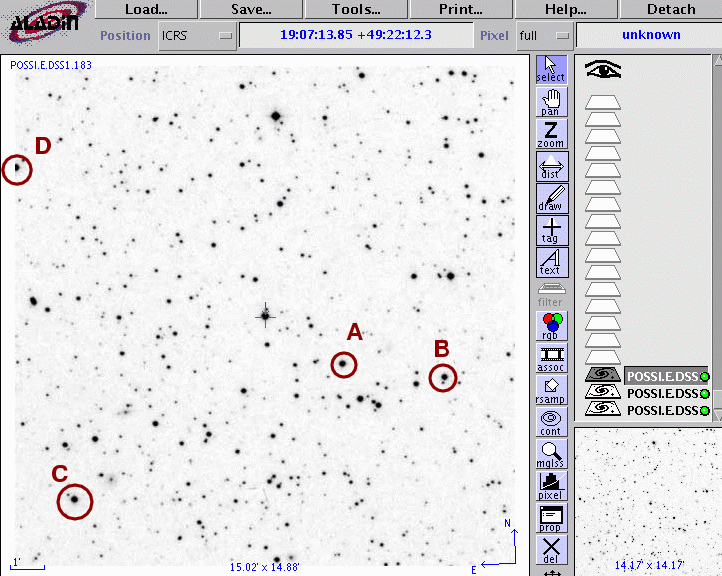
On the night of UT Nov 20, 2007, the SDSS Photometric Telescope ("PT" for short) took a series of exposures of TrES-2. We detected an entire transit, under mediocre conditions; the times of ingress and egress agree roughly with those predicted by the ephemeris.
Notes from the night
This is a chart of the field. TrES-2 is the bright star indicated by the crosshairs. The labelled stars will appear in later analysis.

The host star of TrES-2 has a magnitude V=11.41 according to TrES-2: The First Transiting Planet in the Kepler Field.
Following the procedures outlined by Kent Honeycutt's article on inhomogeneous ensemble photometry, I used all stars available in each image to define a reference frame, and measured each star against this frame. You can find the software package used to do the ensemble photometry online; it's free!
The night was apparently clear. The graph below shows the amount by which instrumental magnitudes from each image needed to be shifted to match the ensemble reference. On a clear night, this graph would show a straight horizontal line.
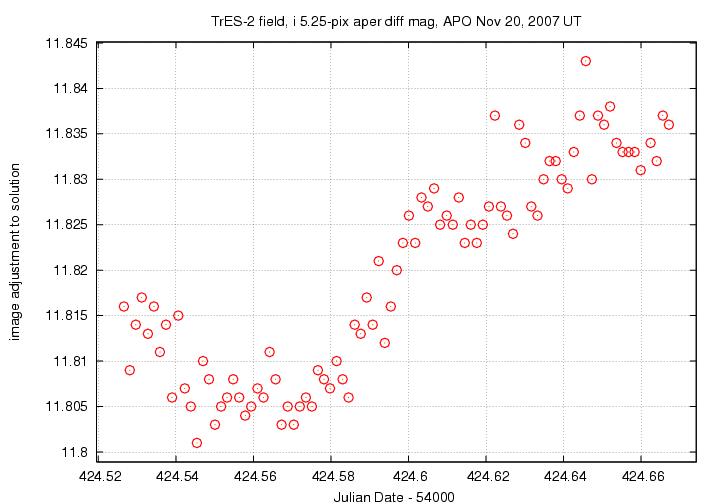
Below is a graph of the scatter in differential magnitude versus magnitude in the ensemble solution.
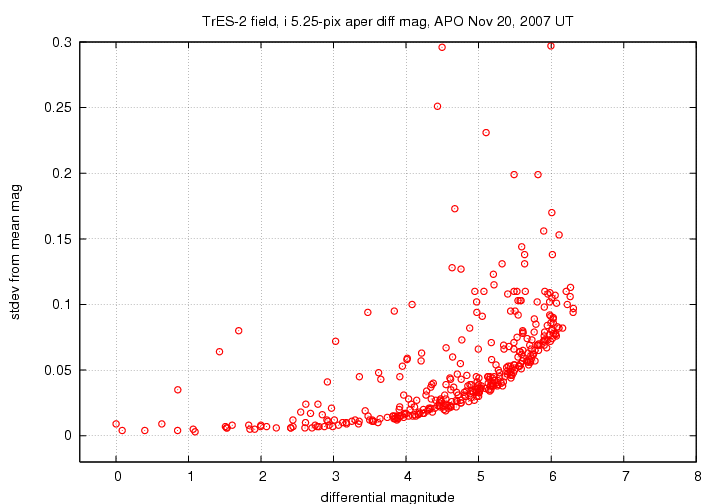
TrES-2 is the star at differential mag 0.00; it shows a small excess of scatter over neighboring stars of the same brightness. The "noise floor" in these measurements is about 0.004 mag -- good for APO transit work.
Below are the light curves for the target (green symbols) and four comparison stars in the field.
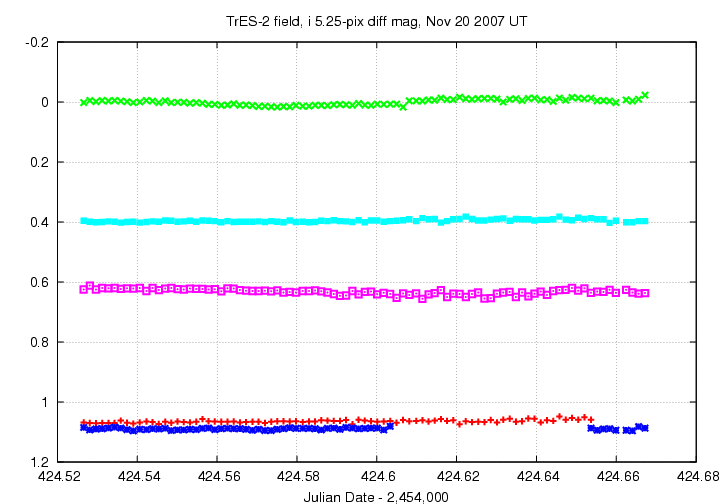
In this closeup, I have shifted the data for two comparison stars to move them closer in magnitude to the target.
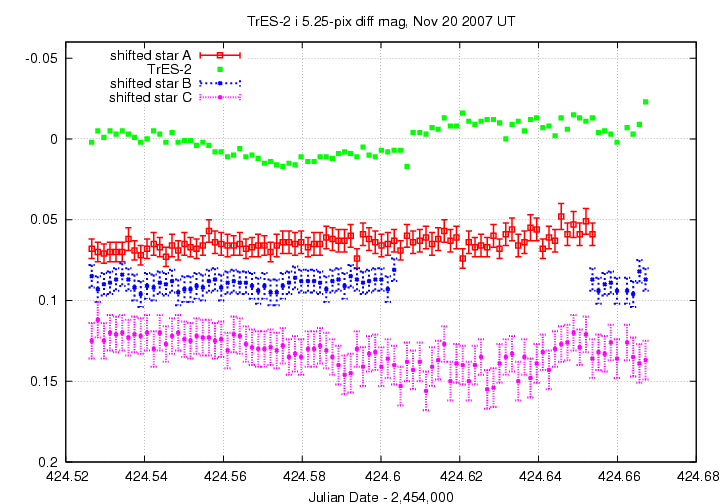
Note the general systematic trend for stars to grow brighter with time; I don't understand it. The transit in the green symbols is obvious, but it is hard to determine the exact times of ingress and egress due to the trend.
Note also that the pink symbols suggest weakly that star C might be a variable of some sort on short time scales. Star C, aka TYC 3550-1224-1, is at (286.9518, +49.2338).
An ephemeris grabbed from transitsearch.org predicts for this night
----------------------------------------------------------------------------------------
Begin Transit Window PREDICTED CENTRAL TRANSIT End Transit Window
All Times UT
HJD Year M D H M
2454424.55 2007 11 20 1 13 2454424.58 2007 11 20 2 2 2454424.62 2007 11 20 2 51
----------------------------------------------------------------------------------------
The ephemeris ingress of UT 2007 Nov 20 01:13:00 corresponds to JD 2,454,424.551, which agrees with my estimate by eye from the light curve of 424.55. The ephemeris egress of UT 2007 Nov 20 02:51:00 corresponds to JD 2,454,424.619, which also agrees with my very rough guess of 424.61(?).
You can grab the measurements for your own analysis. Below is a table with three flavors of time, plus the differential magnitude of the target and an estimate of the uncertainty in each measurement. I show the first few lines of the file to give you an idea of its format.
# Measurements of TrES-2 made with APO PT, Nov 20, 2007 UT. # Each exposure 50 seconds long in SDSS i-band; # Tabulated times are midexposure (FITS header time - half exposure length) # and accurate only to +/- 1 second (??). # 'mag' is a differential magnitude based on ensemble photometry # using a circular aperture of radius 5.25 arcseconds. # # UT day JD-2,450,000 HJD-2,450,000 mag uncert Nov20.52658 4424.52658 4424.52587 0.002 0.005 Nov20.52811 4424.52811 4424.52740 -0.005 0.004 Nov20.52967 4424.52967 4424.52896 -0.001 0.004 Nov20.53122 4424.53122 4424.53051 -0.005 0.004
Last modified 12/02/2007 by MWR.